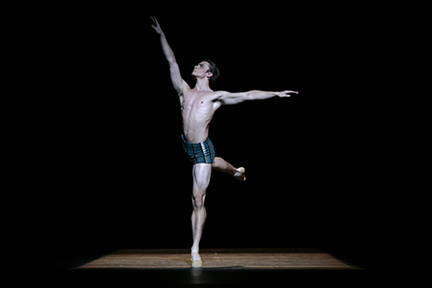Turning Point: Houston Ballet's Shelly Power to judge Prix de Lausanne

Shelly Power
Photo by Amitava Sarkar
The Prix de Lausanne is the Cannes of the ballet world for young dancers. This week, Houston is about to have a major Prix presence as Houston Ballet associate director Shelly Power heads to Switzerland to judge the prestigious international competition. Power attends every year with competing Houston Ballet students, but this is her first year as a judge.
"I'm honored and nervous," says Power. "It's such an important competition. It's also just amazing to be there. The entire city comes alive with the Prix. You see it advertised on buses."
Over the past three decades, the Prix has become internationally renowned and attracts the best young dance students from all over the world. Attending can springboard a student into a professional career with a top ballet troupe.
Think of the Prix like the NFL football draft. Companies come from all over the world to scout new talent and make job offers. Artistic director Stanton Welch regularly offers a Houston Ballet II slot to anyone who places. "This is just a great place to be seen," Power says.
Hundreds of aspiring dancers between the ages of 15-18 send their DVDs with hopes of qualifying. Only 200 are invited to attend, with 80 in round two and just 20 in the finals. A mere six return with honors. Last year Chilean wonder Sebastian Vinbet, then a Houston Ballet II dancer, was one of the lucky six. Vinet is now a promising apprentice in the company. Other Houston Ballet Prix veterans include company members Emily Bowen, Charles-Louis Yoshiyama and Nozomi IIjima. This year, Houston Ballet II members Aaron Sharratt, Emanuel Amachastegui and Liao Xiang will be taking the Prix plunge.
With her chestnut brown hair, tailored suits, and warm but professional style, Power looks more like a bank president than a ballet school director. She brings a background in studio ownership, business, dancer health and wellness along with decades of helping young dancers blossom under her leadership. She and Welch are credited with elevating the Ben Stevenson Academy to international status.
She's no stranger to the international competition world either, and has served as a judge all over the world. Many of the company's international dancers have come to Houston because of Power's contacts. Her talent-spotting track record is spot-on—consider the number of Houston Ballet II and academy students who have risen through the company's ranks.
As for her judging mantra, "I am looking for potential, not perfection, and that little something special," she says. '"I am also watching how they respond in class."
The Prix is unique in the dance competition biz because the judges observe the students in class (ballet and contemporary) and in a classical and contemporary performance. Dancers choose from a short list of classical variations and will perform a contemporary piece by rising-star ballet choreographer Christopher Wheeldon.
"We get to spend a whole week with these students," Powers says. "So they have many chances to impress us."
Unlike American stages, the European stages are raked, and that takes a bit of getting used to. "Dancers are remarkably adaptable," quips Power. When asked what she intends to wear, a look of panic spread across her usually smiling face. "I know I should think about that," she says. "My daughter will be my stylist."
The finals will be streamed live at 3 p.m. Sunday followed by the awards ceremony.
Reprinted from Culturemap.











